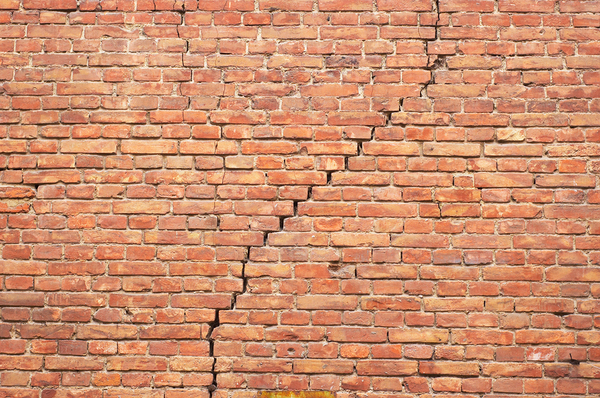
Cracks in brick walls should be noted during a home inspection.
When you’re conducting a home inspection, you want to be certain that the structure is sound. Brick and masonry, in particular, has a reputation for being stronger and more secure than other materials, as proven in the popular children’s story The Three Little Pigs.
But how can you be certain the brickwork has not lost any of its integrity or been compromised in any way? Can you tell from just looking? What if you find cracks?
- Evaluate cracks. The truth is, cracking is inevitable in masonry, as it is with stucco. It’s normal, and it comes from the material settling and moving or shrinking. Some cracks are more serious than others.For instance, if you see a long crack more than one-eighth inch wide spanning several layers of brick, this may pose a problem. It may signify a structural issue, but even if it doesn’t, cracks this wide are bound to let moisture in, which just degrades the walls more quickly.In cases like these, flagging the issue for follow-up by a certified structural engineer is wise. These professionals can evaluate the walls and the damage and make an educated ruling as to whether the crack is a serious problem and if it needs repair.
- Look for secondary signs. If you see cracks in masonry and are unsure of whether they might be problematic, look for other, subtle signs of foundation shifting. These include doors and windows that are difficult to open and close, crooked door or window frames, uneven floors and interior cracking or bulging of any brick walls.
- Assess brick veneers differently. Veneers — or walls built for aesthetic appearance versus to bear the load of the building — should be evaluated based on different criteria.Cracking is also expected with this type of masonry, and it is, in fact, helpful in allowing water to drain. However, entire loose sections of wall, while not dangerous to the structure itself, should be noted and repaired.

- Inspectors should check for weep holes with veneer walls. These are critical in allowing moisture to escape from behind the brick. If the weep holes are blocked or missing, there could be internal moisture problems.Other issues to note with masonry veneer include efflorescence, spalling, cracking, deterioration of the mortar, and bowing walls. Any of these can result from the building settling, a harsh freeze/thaw cycle or physical damage such as being hit by a vehicle.
- Appraise the mortar. Pay careful attention to the mortar, since cracking or deterioration here can also signal a problem. Most often some cracking in the mortar is normal, and it can usually be scraped out and replaced if desired.However, some types of degradation to the mortar are the result of improper or poor preparation of the material, the use of substandard installation practices or the job being done on a day that was too cold, too wet or otherwise problematic, weather-wise.With a veneer wall, all these issues are reparable, versus with a load-bearing wall, when they might prove too far gone to support the structure. Still, they should be noted the same way any damage or deterioration at a home should be noted when doing a home inspection.
For more information about home inspection, check out our website today!
The post 4 Tips for Inspecting Masonry and Brick Veneers appeared first on Home Inspection Training & Certification Online.

